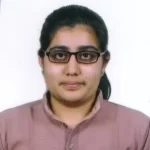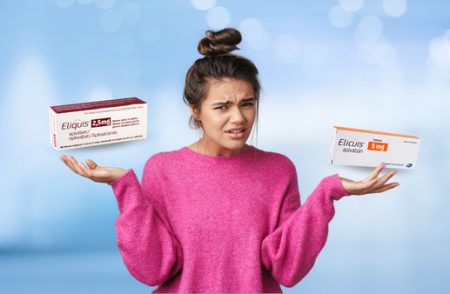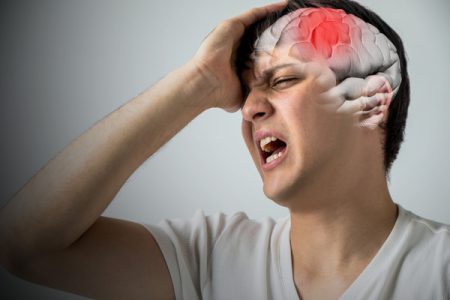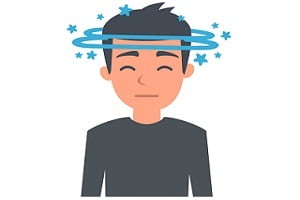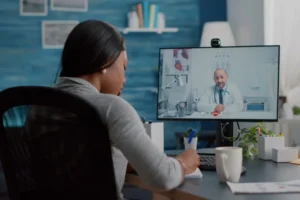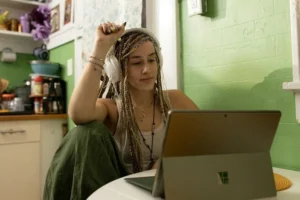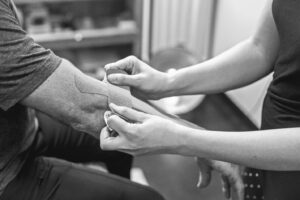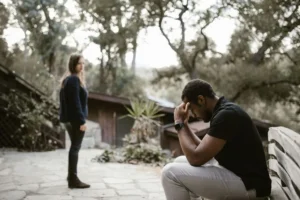How Long Does It Take to Recover From a Stroke?
- Updated on: Jul 16, 2024
- 9 min Read
- Published on Oct 3, 2019
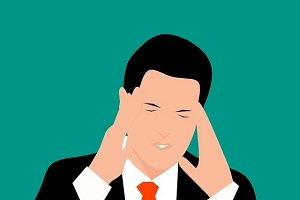
What happens when you get a stroke?
Stroke is a medical condition which involves blockage of blood flow due to a blood clot or broken blood vessel in the brain. This leads to a long term disability due to impaired cognition, motor, communication and sensory skills. Its treatment involves restoring the blood flow in the brain, reducing the pressure in the surrounding areas, and also regaining the lost abilities and skills of the patient.
Stroke Recovery
Stroke recovery is the process to relearn the skills and abilities that are lost during a stroke. This process makes the patient independent and also improves his/her quality of life. Each person’s ability to respond to recovery varies greatly. The stroke recovery process majorly depends upon the region affected during the stroke and the abilities lost due to it.
Skills affected during a stroke
A large number of different skills or abilities are damaged during a stroke. Some of them are as follows:
Speech Skills
Stroke can cause language impairment, also known as aphasia. This usually occurs due to damage of muscles involved in speech.
Cognitive Skills
Stroke can lead to impaired thinking, reasoning abilities, and poor judgment and can also cause memory problems. It can also cause behavioral changes in a patient.
Motor Skills
Stroke can weaken the muscles of one side of the body and also impair movement along the joints. This leads to loss of coordination and disruption of physical movements in a patient. In some cases, the patient might experience painful muscle spasms also.
Sensory skills
Stroke can damage sensory input receptors of the body such as heat, cold or pressure receptors.
See also: Conditions That Can Increase Risk of a Stroke: What Causes a Stroke?
See also: The Brain: Anatomy and Functions
Therapies involved in stroke recovery
These therapies are part of a massive stroke recovery process. These therapies consist of different techniques to help a person regain his/her abilities and skills. These may include such as:
Physical activities
Physical activities majorly focus on the recovery of abilities lost during stroke paralysis. They are further classified into various types such as:
Motor skill exercises
Motor skill exercises involve exercises which target improvement of muscle strength and coordination such as to improve swallowing ability and other abilities of the body.
Mobility training
This requires tools involved in mobility aid such as canes, walker, wheelchair or ankle brace. Ankle brace is one such tool which provides strength and stability to the ankle when a person relearns to walk.
Constraint-induced therapy
When an individual tries moving his/her affected limb after a stroke, the unaffected limb gets restrained. This method is known as constrained-induced therapy or forced use-therapy.
Range-of-motion therapy
This method helps in reliving muscle tension and also regaining the range of movement in the affected muscles.
Technology-assisted physical activities
These activities are divided into the following techniques:
Functional electrical stimulation
This method involves application of electric signals to weakened muscles to allow them to contract. Electrical stimulation helps in relieving the affected muscles after a stroke.
Robotic technology
This method involves use of robotic devices which can assist in performing a repetitive motion in the affected limbs. This helps in regaining function and strength in the affected limb.
Wireless technology
This method involves use of an activity monitor which helps in increasing post-stroke activity.
Virtual reality
This technique involves use of video games and computer-based instruments which provide a platform to interact with a simulated, real time environment.
Cognitive and emotional activities
Therapy for cognitive disorders
This technique involves treatment of lost cognitive abilities such as memory, processing, problem solving, social skills, and judgment and safety awareness by specialized occupational therapy and stroke speech therapy.
Therapy for communication disorders
This technique focuses on treatment of lost communication skills such as speaking, listening, writing and comprehension.
Psychological evaluation and treatment
This technique involves testing your emotional adjustment and also includes counseling or participation in a support group.
Medication for stroke effects
Medication may involve taking an antidepressant to help improve alertness, agitation or movement.
Experimental therapies
These methods are still in experimental stages and require scientific and clinical validation to confirm their usefulness in stroke recovery. These methods may include such as:
Noninvasive brain stimulation
Noninvasive brain stimulation involves use of transcranial magnetic stimulation which helps in improving various motor skills of a patient.
Biological therapies
Biological therapies involve use of stem cells to improve various brain tissues of the body.
Alternative medicine for stroke recovery
Various techniques involved in alternative medicine-based treatment for stroke are massage, herbal therapy, acupuncture and oxygen therapy.
See also: What are the Warning Signs and Symptoms of a Stroke?
What is the right time to start the process of stroke recovery for a patient?
The process of stroke recovery should ideally begin immediately after a stroke occurs, but usually doctors’ priority at this stage is to stabilize the medical condition of the patient, control the life-threatening condition, prevent the occurrence of another stroke and minimize any stroke-related problems.
In most cases, stroke recovery starts 24-48 hours after the stroke occurs.
How long does it take to recover from a stroke?
The duration of the stroke recovery process majorly depends upon the severity and various complications that a person might suffer through a stroke. Some patients recover fast while others might take a longer time, which could be about few months to years after a stroke hits them.
During the stroke recovery process, the techniques that doctors use may change with time, as the person reacts to the treatment and starts coping to learn various abilities and skills.
It is believed that the rate of recovery is highest after the occurrence of stroke, but in some cases, recovery might also occur after 12-18 months from a stroke.
Timeline of Stroke Recovery
Stroke recovery is a lengthy process. This process depends on how the patient would react towards the treatment and may take about several months to few years. The stoke recovery timeline is as follows:
Stroke occurs-brain reacts
As soon as a stroke occurs, the brain starts responding to it. The recovery may also involve either death of the individual or death of certain brain cells in the affected area.
Three hours In
If the patient receives medical attention within three hours of the stroke, then the blood clots can be removed via IV-drip. This blood clot removal also reduces the chances of long-term disabilities in a patient.
Initial Recovery
Initial recovery usually starts once the doctor accesses and treats the critical condition in a patient and also takes necessary steps to prevent further complications. This occurs when the patient visits a doctor’s clinic or a hospital for the first time. It also improves the chances of recovering from a damaged body and brain function. Doctors encourage physical movement for patients such as motion exercises and changing positions.
Once the patient is relieved from the hospital, he/she can go to a nursing home or in-patient rehabilitation center or home. But the recovery process will continue and will involve to aim regaining skills of the patient and making him/her independent. When the patient returns home, he/she might visit out-patient facility or perform certain exercises at home to improve his/her skills and abilities.
Five-six weeks
This period involves intensive treatment programs. Depending upon the patient, he/she might visit in-patient or out-patient therapy center. The therapy center may carry therapies as needed for five to six days per week which may involve intensive physical and occupational therapy. Elderly stroke patient’s recovery may be carried at home rather than visiting any medical centre if the doctor allows it.
Three months
At this stage, the patient may experience rapid recovery. If the stem cells of the patient are damaged, then it might take a much longer time to recover – about a year or even longer.
Six months
Recovery from stroke damages can continue even up to six months, but it would be much slower than progress made in the initial three months. The initial six months are crucial as they involve most of the possible improvement in the skills and abilities of a person affected with the stroke. The chances of improvement slow down after six months of getting a stroke. Recovery in this period mainly depends upon a patient’s efforts and the support from his/her family, friends and doctors.
Two years
Stroke paralysis recovery occurs about 2 years after the stoke and the patient may now be able to fully regain his/her speaking ability.
Which healthcare centers and doctor are involved in stroke recovery process?
The stroke recovery process usually begins at the hospital but further assistance may be needed as per convenience, requirement and insurance of the patient and his family. These centers and specialties may include:
Inpatient rehabilitation units
These units are usually part of a hospital or a clinic or may also work as independent from the hospital. The patient stays at these centers for about 2-3 weeks as a part of the intensive stroke recovery program.
Outpatient units
Outpatient units are part of a hospital or clinic and the patient either visits these centers for about a few hours or might stay there for a week.
Skilled nursing facilities
The type of nursing facilities available may vary from center to center. These centers involve specialized stroke rehabilitation programs which are capable of providing less-intensive care as compared to other hospital recovery units.
Home-based programs
Home-based therapies may provide greater flexibility and comfort for a patient as compared to being at other locations, but it might not be possible to include use of specialized equipment during the treatment process. Also, this type of recovery process may not be covered under an insurance policy. But it is highly beneficial for elderly patients as travelling for them may be quite difficult.
Which medical practitioners are parts of the stroke recovery team?
The stroke recovery team consists of various medical specialists which are as follows:
Physicians
These include primary care doctors, neurologists, and specialists in physical medicine and recovery. They help in regaining a healthy lifestyle behavior and also reduce the chances of another stroke.
Rehabilitation nurses
These nurses are trained to care for the daily routine activities of patients and are part of the recovery team. They are also specialized in carrying out bowel and bladder assistance required by patients. They teach the patient to perform daily routine activities on their own.
Physical therapists
Physical therapists are specialists who help train the patient to relearn their physical movement skills such as walking and maintaining balance.
Occupational therapists
Occupational therapists are specialists involved in the recovery process to help regain physical movements of hands and arms of a patient which help them carry out day-to day activities. They also equip the patient to swallow food and help with other cognitive skills.
The stroke recovery team consists of another group of therapists which focuses on training cognitive, emotional and vocational skills to a patient. These specialists may include:
Speech and language pathologists
Speech and language pathologists help improve the language skills, ability to swallow, address memory, address thinking and communication problems of patients.
Social workers
Social workers help in providing financial help, accommodation, and identify community resources for the patient and his/her family.
Psychologists
Psychologists are therapists who target to improve a patient’s mental skills and emotional concern.
Therapeutic recreation specialists
They help target to recreate interest in activities or roles that a patient loved to do before the stroke, such as hobbies and community participation by the patient.
Vocational counselors
Vocational counselors are therapists who help patients regain any return-to-work issues experienced by them.
Dieticians
Dieticians are specialists who train patients about healthy eating and inculcate a hibit for special diet programs which involve low fat, low salt and low calories.
Case manager
Case managers are people who help in facilitating follow-up to acute-care, coordinating care from various providers and also connecting to social services.
Factors Governing Massive Stroke Recovery Process
The factors governing the stroke recovery process may vary from person to person, and may include such as:
Physical factors
These include the severity of stroke on the basis of cognitive and physical effects of the stroke on a patient’s brain. The age of an individual also affects the recovery process.
Emotional factors
These factors include motivation and mood of the patient. These factors play a major role in the recovery particularly during recovery at home even if the therapy sessions are carried out on a regular basis.
Social factors
These factors involve support and care provided by family and friends to the patient.
Therapeutic factors
Therapeutic factors include time of initiation of recovery process and ability of the recovery team to regain a patient’s lost skills and abilities.
The presence of any medical health problem in the patient before the stroke also affects the ability to recover from a stroke.
Brain hemorrhage and brain hemorrhage recovery
Brain hemorrhage is a condition which involves bleeding in and around the brain. This may lead to inflammation in these regions.
The brain hemorrhage recovery involves extensive rehabilitation efforts which may include physical and occupational techniques, and speech therapy. These recovery methods help patients regain their body functions. The process of recovery in a brain hemorrhage patient may take about few months. The chances of complete recovery are very less, and many people might experience persistent weakness or sensory problems or they may have residual seizures, headache and memory problems even after the treatment is complete.
Mini Stroke and Mini Stroke Recovery
Mini stroke is commonly known as transient Ischemic attack (TIA). A transient Ischemic attack occurs due to cessation of blood to the brain for a short period of time. This does not lead to damage of brain cells nor causes any permanent disability in an individual.
Occurrence of a mini stroke indicates arrival of a stroke in the near future. The recovery from a mini stroke can occur by use of medication such as antiplatelet drugs and anticoagulants.
See also: Treatment of Strokes.
Prognosis and Survival: What are the chances of recovering from a stroke completely?
According to the survey and analysis from the National Stroke Association, only 10% of the people who experience a stroke recover completely, 25% people recover with minor impairments and about 40% people experience moderate to severe impairments which require special care. These 40% individuals may suffer from a disability that would affect their daily activities in workplace or in personal life.
About 10% of the people would require long-term care in a nursing home or a medical center. It has also been reported that 15% people die due to a stroke.




